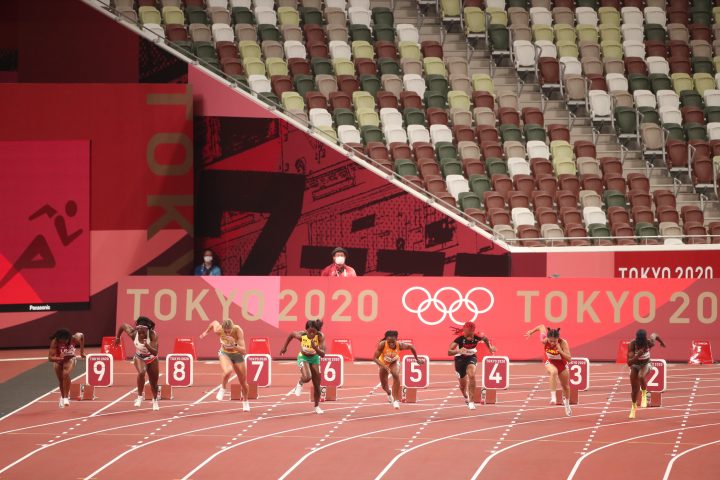Against the backdrop of the COVID-19 pandemic, the 2020 Tokyo Olympics this year are without the usual crowds and fanfare associated with the world’s biggest sporting spectacle.

This is the first time in the 125-year history of the modern Games that spectators have been barred from attending as the host city, Tokyo, battles a surge in coronavirus cases that forced Japan to declare a state of emergency.
As has been the case over the past year and a half amid COVID-19, it’s a different vibe for the athletes so used to competing in front of packed stadiums, but they have had to adapt.
“These big venues that have been built and designed to hold large crowds of people are now sitting relatively empty and so from the athlete’s perspective, it feels empty,” said Catherine Sabiston, a professor in the faculty of kinesiology and physical education at the University of Toronto.

Fans not only provide the visual signals that help athletes feel supported, but also auditory cues – either through cheers or boos – that give them a sense of feedback on their performance, Sabiston told Global News.
“Most athletes train for fan noise.”
Because fans can motivate as well as give energy and sense of purpose to athletes, their absence can be a challenge, Sabiston added.
To make up for the lack of actual spectators at the venues, Olympic organizers are playing fake ambient crowd sounds customized for each sport.
It’s a ploy that different sports leagues and tournaments have used over the past year as the pandemic forced events to be held with empty stands.
Since March 2020, the fan-less sporting environment that many athletes found themselves in may have prepared them for the Tokyo Games this year.
“Well-prepared athletes considered this potential and began mentally preparing for it months ago,” said Adam Naylor, a sport psychology consultant based in Boston, Mass.
“That said, we can’t neglect that the presence and energy of fans provides an energy bump for athletes — both better and worse performance-wise,” he told Global News.

Performance and pressure
Despite the change in atmosphere, it has been business as usual for many athletes on the field.
In fact, just one week into the Games several records have already been broken on the track and in the pool.
The latest was on Saturday when defending champion Elaine Thompson-Herah set a new Olympic record with her gold medal-winning 100-metres sprint.
Canada’s medal hopeful and defending bronze winner Andre De Grasse also clocked in a season-best time on Saturday to cruise into the men’s 100-metres semi-finals.
“We’ve learned that some terrific performances can be put on display without a live audience,” said Naylor.
“While celebrations are certainly sweeter when fans are present, athletes are pretty good at being professionals and putting forth a good performance once the ball is in play or the start whistle has blown.”
Not having fans can also be a blessing in disguise for some as it takes away the added pressure and anxiety caused by an audience.
This is especially the case for less experienced competitors, experts say.
Fan-less Olympics can help athletes who suffer from higher levels of competitive or social anxiety thrive without the crowd present as an additional stressor, said Sabiston, who is also Canada Research Chair in Physical Activity and Mental Health
But the more experienced and accomplished players can actually perform better when the arenas are full and rocking, Naylor added.
‘Objective Olympics’
Former Olympian Alexander Kopacz, who won gold for Canada in the two-man bobsleigh event at the 2018 Winter Games in South Korea, said he would try to block out the surrounding crowd noise while competing because it would get “too overwhelming.”
“I’m pretty confident, in general, a lot of athletes are probably a little bit more appreciative of having a more calm state to be less distracted as they approach,” the 31-year-old from London, Ont., said.
However, having the crowd at the end to celebrate the wins was “super exciting,” he added. It’s something the Olympians this year are missing out on, Kopacz said.
There are a number of sports, like golf, archery, shooting and diving, where the presence or lack of fans can be irrelevant, said Sabiston. But team sports, such as soccer, rugby and field hockey, are certainly being challenged because they are designed for having many people around them, she added.
In some track and field events like pole vaulting, high jump and long jump, the athletes feed off the energy and tempo from the crowd as they prepare to launch.
Spectators can also influence referees and judges in different sports which are usually somewhat subjective – like artistic gymnastics and synchronized swimming, said Sabiston.
“Without those fans, we’re having a more objective Olympics than we’ve ever had before.”







Comments